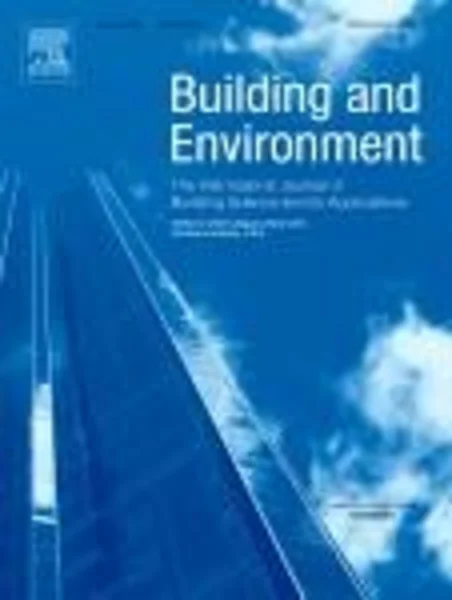-
urban planning indicators, morphology and climate indicators: a case study for a north-south transect of beijing, china
جزئیات بیشتر مقاله- تاریخ ارائه: 1390/01/01
- تاریخ انتشار در تی پی بین: 1390/01/01
- تعداد بازدید: 746
- تعداد پرسش و پاسخ ها: 0
- شماره تماس دبیرخانه رویداد: -
eleven sites, representing different urban morphologies across central beijing, are used to simulate urban heat island effects and explore the relationship between urban planning indicators and climate indicators such as daily maximum and minimum surface temperatures. the results indicate that mesoscale urban planning indicators can explain the majority of the urban climate differences among the sites. for example, green cover ratio and floor area ratio can explain 94.47–98.57% of the variance for daily maximum surface temperature, green cover ratio and building height can explain 98.94–99.12% of the variance for daily minimum surface temperature, and floor area ratio, green cover ratio and building density together can explain 99.49–99.69% of the variance for time of peak surface temperature. furthermore, green cover ratio is identified as the most significant urban planning indicator affecting the urban thermal environment.
مقالات جدیدترین رویدادها
-
استفاده از تحلیل اهمیت-عملکرد در ارائه الگوی مدیریت خلاقیت سازمانی و ارائه راهکار جهت بهبود
-
بررسی تاثیر ارزش وجوه نقد مازاد بر ساختار سرمایه شرکت های پذیرفته شده در بورس اوراق بهادار تهران
-
بررسی تأثیر سطح افشای ریسک بر قرارداد بدهی شرکت های پذیرفته شده در بورس اوراق بهادار تهران
-
بررسی تأثیر رتبه بندی اعتباری مبتنی بر مدل امتیاز بازار نوظهور بر نقد شوندگی سهام با تأکید بر خصوصی سازی شرکت ها
-
تأثیر آمیخته بازاریابی پوشاک ایرانی بر تصویر ذهنی مشتری پوشاک ایرانی (هاکوپیان)
-
بررسی تاثیر نسبت ابعادی بر ضریب شکل پذیری قابهای خمشی فولادی
-
مروری بر بازاریابی داخلی و پیامدهای آن در سازمان ها
-
بررسی خرابی های رویه بتنی اپرون قدیم فرودگاه زاهدان (مطالعه موردی)
-
اکتشاف زونهای کارستی آبدار با استفاده از روش ژئوالکتریک مطالعه موردی منطقه سمیرم واقع در استان اصفهان
-
l-methionine modified dowex-50 ion-exchanger of reduced size for the separation and removal of cu(ii) and ni(ii) from aqueous solution
مقالات جدیدترین ژورنال ها
-
مدیریت و بررسی افسردگی دانش آموزان دختر مقطع متوسطه دوم در دروان کرونا در شهرستان دزفول
-
مدیریت و بررسی خرد سیاسی در اندیشه ی فردوسی در ادب ایران
-
واکاوی و مدیریت توصیفی قلمدان(جاکلیدی)ضریح در موزه آستان قدس رضوی
-
بررسی تاثیر خلاقیت، دانش و انگیزه کارکنان بر پیشنهادات نوآورانه کارکنان ( مورد مطالعه: هتل های 3 و 4 ستاره استان کرمان)
-
بررسی تاثیر کیفیت سیستم های اطلاعاتی بر تصمیم گیری موفق در شرکتهای تولیدی استان اصفهان (مورد مطالعه: مدیران شرکتهای تولیدی استان اصفهان)
-
ارزیابی کیفی اطلاعات اینترنتی در حوزه سلامت
-
موانع و کاستی های کنوانسیون ملل متحد در مورد حقوق دریاها در رابطه با مجادله با دزدی دریایی
-
بررسی ارتباطات اثربخش و سکوت سازمانی مطالعه موردی: سازمان آب و فاضلاب شهری خراسان جنوبی
-
مقایسه رفتار لرزه ای سازه فولادی بهسازی شده با سه نوع میراگر ویسکوز، تسلیمی و اصطکاکی در سازه های کوتاه مرتبه، میان مرتبه و بلند مرتبه
-
درآمدی بر مبانی مسئولیت سازمانی از نگاه اسلام




سوال خود را در مورد این مقاله مطرح نمایید :